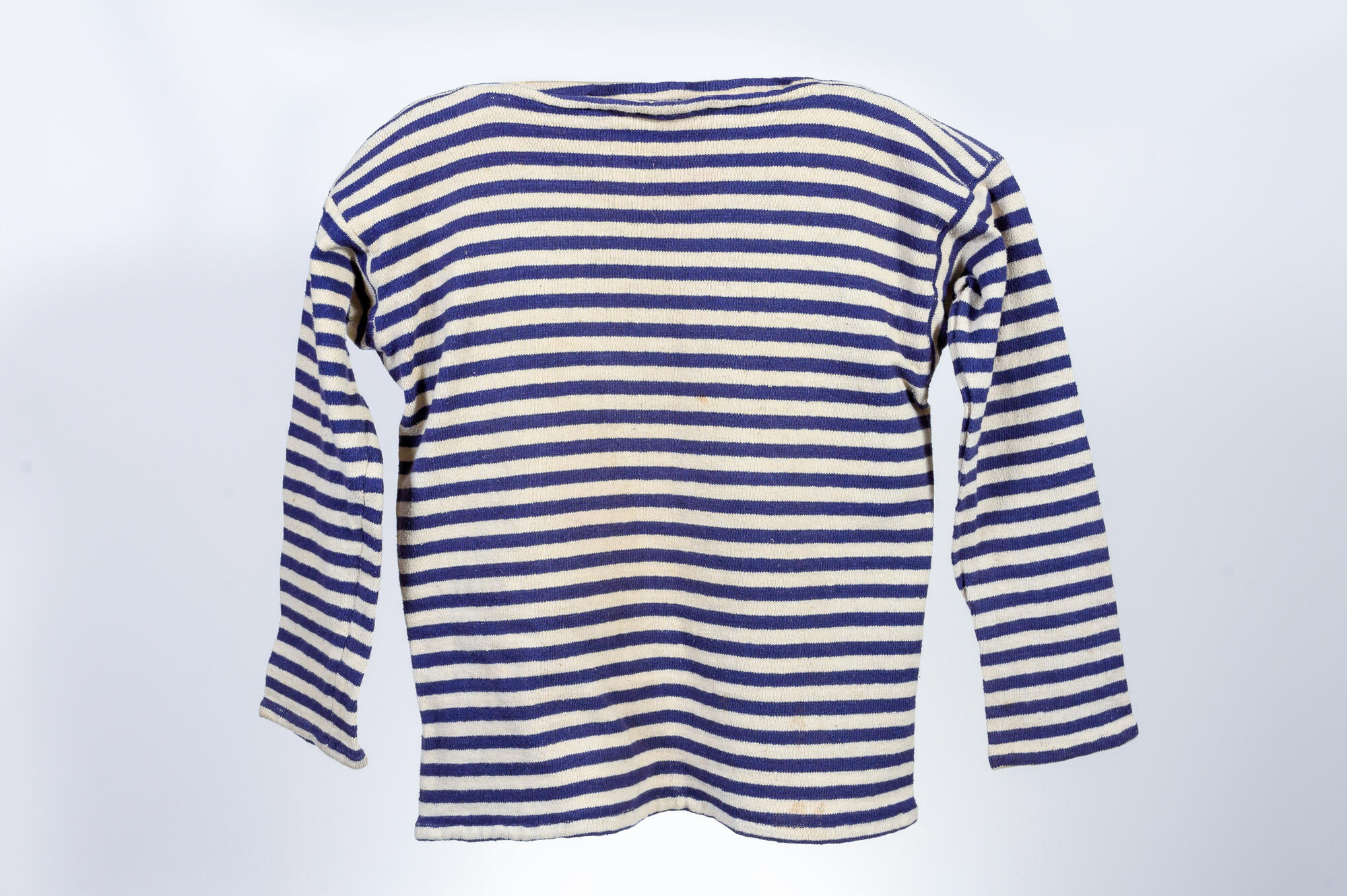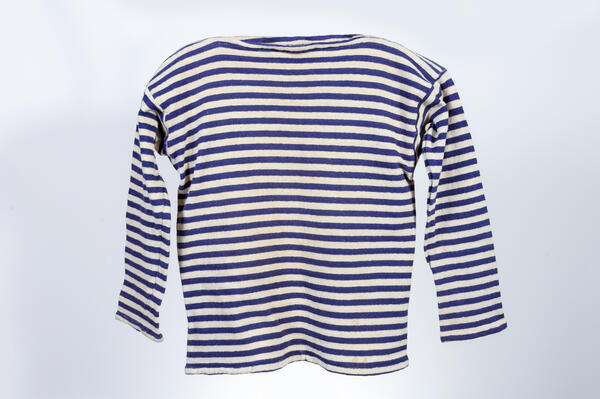The Russian telnyashka is a striped undershirt, which has been part of a marine uniform of various countries at different times. In the 17th century, fishermen from Brittany, one of the regions of France, were the first people who started wearing such clothes. Some of them supposed that black-and-white stripes could be a talisman against mermaids, sea monsters, and other evil creatures, which sailors of that time believed in. However, there is a more down-to-earth version according to which it is easier to notice and rescue people in striped clothes if they fall overboard.
Fishermen and sailors from various countries wore telnyashka-like clothes till the 18th century when many European countries established uniforms for their fleets. Striped shirts were not allowed because they differed in style and did not fit the strict appearance requirements. Some sailors continued to wear them secretly under other clothes, but, if such offense was revealed, a violator was strictly punished.
In Russia, telnyashkas became popular in the mid-19th century. They officially became part of the fleet uniform in 1874 when Grand Duke Konstantin Nikolayevich of Russia signed the special decree. At that time, he held the rank of admiral and managed the fleet and the navy, which means he acted as the Minister of Marine Affairs.
Initially, uniform telnyashkas were supplied by foreign countries. Mass production of telnyashkas in Russia started only in the late 19th century. At first, they were made of woolen fabric with white stripes four times wider than blue ones. The stripes became of one size only in 1912. At the same time, the woolen fabric was replaced by cotton.
The collection of the National Museum of the Mari El Republic exhibits the telnyashka which belonged to Dmitry Busygin, a participant of the First World War. He was born in the village of Kurba where the Mari-Tureksky district is located now. In 1914, Busygin was called into the Army to the Baltic fleet. He studied almost a year in the Kronstadt Naval School, and then he was sent to the battleship Poltava. The vessel was in the roadstead in the port of Helsingfors, which is now Helsinki, the capital of Finland. It guarded the Gulf of Finland against German ships and submarines.
When the October Revolution started, Dmitry Busygin took the Bolshevik side and went to Petrograd (modern Saint Petersburg) with other sailors of the Poltava crew. There he guarded the cruiser Aurora against probable attacks of the Whites.
Fishermen and sailors from various countries wore telnyashka-like clothes till the 18th century when many European countries established uniforms for their fleets. Striped shirts were not allowed because they differed in style and did not fit the strict appearance requirements. Some sailors continued to wear them secretly under other clothes, but, if such offense was revealed, a violator was strictly punished.
In Russia, telnyashkas became popular in the mid-19th century. They officially became part of the fleet uniform in 1874 when Grand Duke Konstantin Nikolayevich of Russia signed the special decree. At that time, he held the rank of admiral and managed the fleet and the navy, which means he acted as the Minister of Marine Affairs.
Initially, uniform telnyashkas were supplied by foreign countries. Mass production of telnyashkas in Russia started only in the late 19th century. At first, they were made of woolen fabric with white stripes four times wider than blue ones. The stripes became of one size only in 1912. At the same time, the woolen fabric was replaced by cotton.
The collection of the National Museum of the Mari El Republic exhibits the telnyashka which belonged to Dmitry Busygin, a participant of the First World War. He was born in the village of Kurba where the Mari-Tureksky district is located now. In 1914, Busygin was called into the Army to the Baltic fleet. He studied almost a year in the Kronstadt Naval School, and then he was sent to the battleship Poltava. The vessel was in the roadstead in the port of Helsingfors, which is now Helsinki, the capital of Finland. It guarded the Gulf of Finland against German ships and submarines.
When the October Revolution started, Dmitry Busygin took the Bolshevik side and went to Petrograd (modern Saint Petersburg) with other sailors of the Poltava crew. There he guarded the cruiser Aurora against probable attacks of the Whites.



